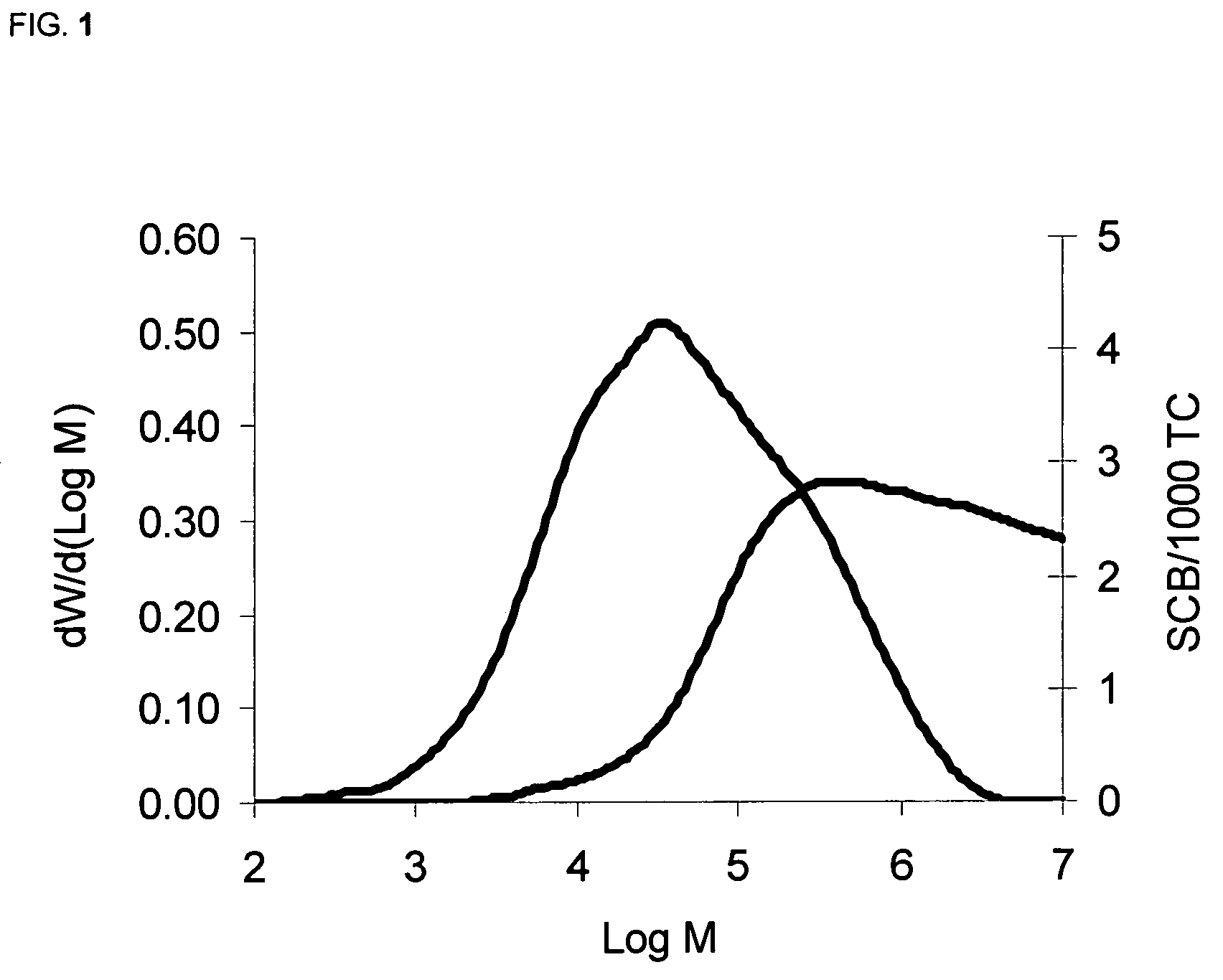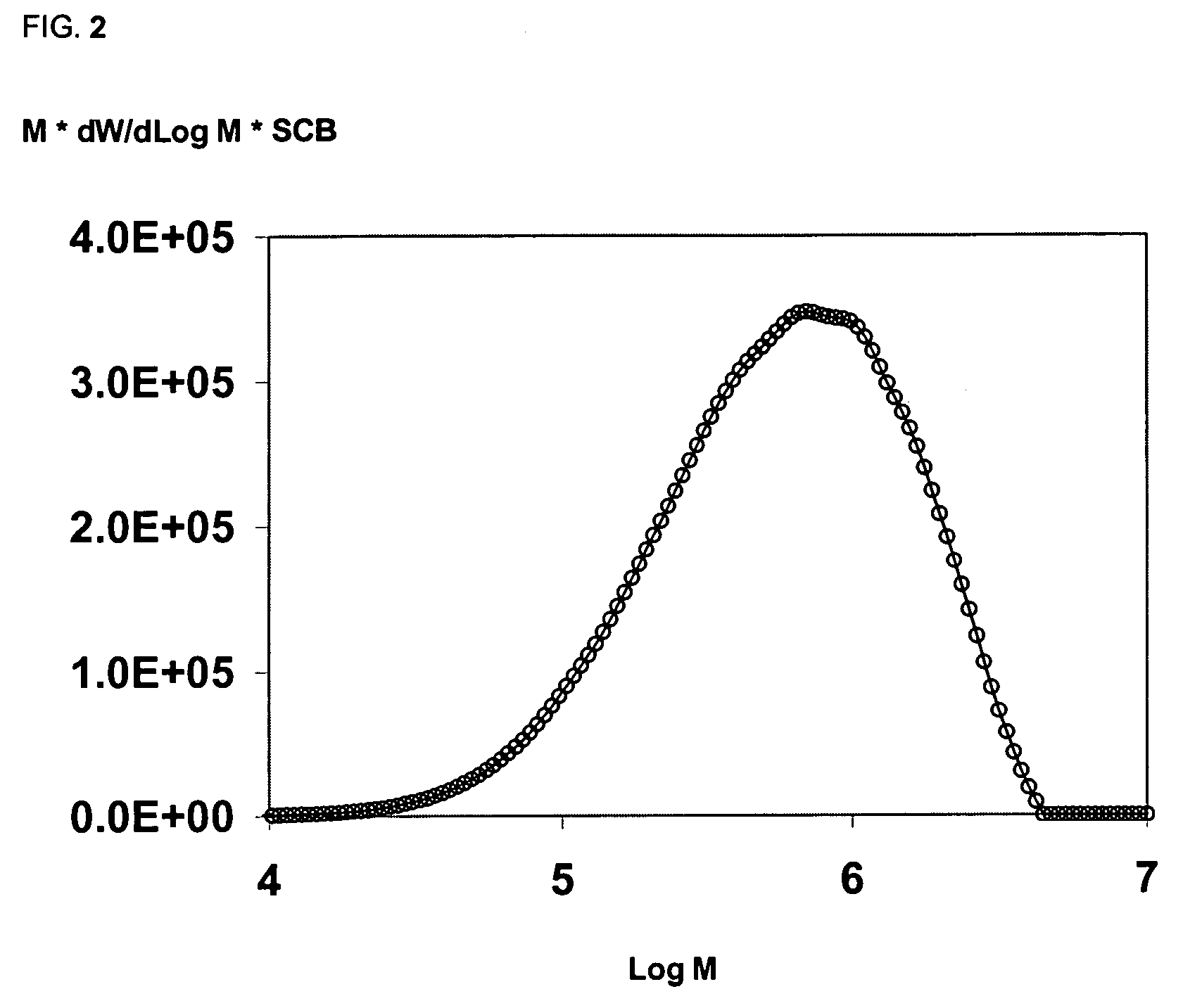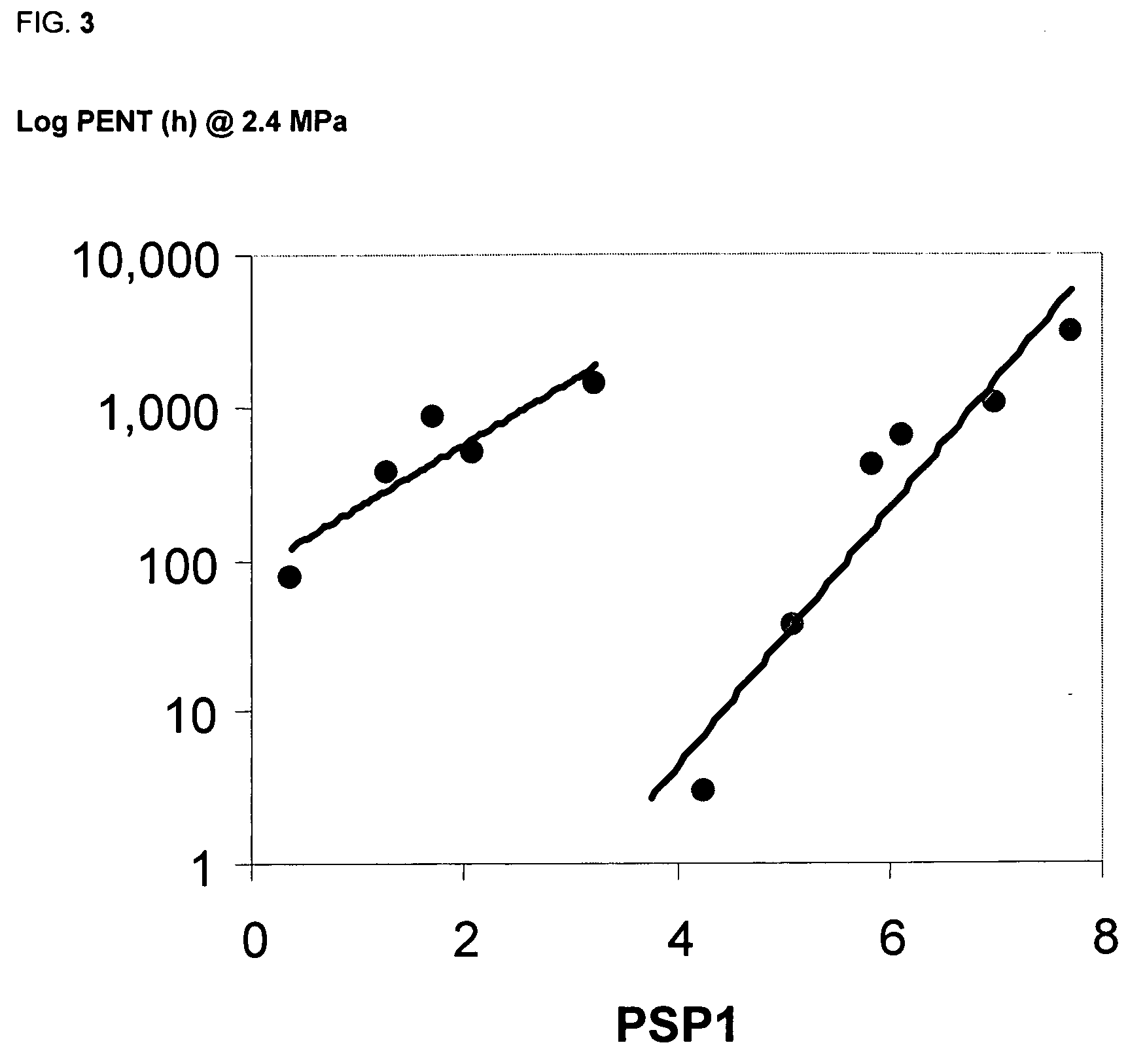Method for employing SEC-FTIR data to predict mechanical properties of polyethylene
- Summary
- Abstract
- Description
- Claims
- Application Information
AI Technical Summary
Benefits of technology
Problems solved by technology
Method used
Image
Examples
example 1
[0161]Table I lists the Mw, composite density, and measured PENT (hours) at 2.4 MPa for seven (7) bimodal polyethylene polymers produced using Ziegler-Natta catalysts. FIGS. 9-15 are the MWD profile and SCBD of these seven polymer training samples. These figures illustrate the measured data and the fitted SCBD using an SEC-FTIR technique, as described in U.S. Pat. No. 6,632,680 and U.S. patent application Ser. No. 10 / 463,849. Due to the low weight fraction at very high molecular weights, it is often difficult to accurately measure the SCB's at these respective molecular weights. Application of the methodology discussed earlier relative to the weighted cross terms of these seven training samples resulted in the curves illustrated in FIG. 16. The areas under the curves in FIG. 16 decrease from polyethylene polymer resin BM-1 to BM-7. FIG. 17 illustrates that a strong linear correlation exists between the Log PENT value and PSP1 for these polymers. Since an exact PENT value was not est...
example 2
[0162]Five (5) unimodal polyethylene polymers were produced using a chromium-based catalyst. These polymers had composite densities in the range of about 0.948 to about 0.950 and Mw in the range of about 260 to about 320 kg / mol. The PENT value at 2.4 MPa, the MWD profile, and the SCBD of these five polymer training samples were also provided. Although the MWD profile and SCBD data are not shown, this information is exemplified in FIGS. 9-15 related to Example 1. Application of the methodology discussed earlier relative to the weighted cross terms of these five training samples resulted in the curves illustrated in FIG. 18. FIG. 19 illustrates that a strong linear correlation exists between the Log PENT value and PSP1 for these polymers. Thus, the PENT value of a test sample from the same polymer family could be determined by applying the correlation in FIG. 19 to the PSP1 value of the test sample.
example 3
[0163]Example 3 uses the same bimodal polyethylene polymers discussed in Example 1. Table II lists a specific molecular weight, the weight fraction at that molecular weight, the SCB's at that molecular weight, and the measured PENT (hours) at 2.4 MPa for six (6) bimodal polyethylene polymers. Weighted cross terms were calculated for each of these six training samples, divided by 100,000, and plotted against the measured PENT value. Even with this single point method (i.e., taking data only at one molecular weight, Log M=6.05), FIG. 20 illustrates that a strong linear correlation exists between the Log PENT value and the weighted cross term divided by 100,000. Thus, the PENT value of a test sample from the same bimodal polymer family could be determined by applying the correlation in FIG. 20 to a single weighted cross term of the test sample.
PUM
| Property | Measurement | Unit |
|---|---|---|
| Pressure | aaaaa | aaaaa |
| Pressure | aaaaa | aaaaa |
| Mass | aaaaa | aaaaa |
Abstract
Description
Claims
Application Information
 Login to View More
Login to View More - R&D
- Intellectual Property
- Life Sciences
- Materials
- Tech Scout
- Unparalleled Data Quality
- Higher Quality Content
- 60% Fewer Hallucinations
Browse by: Latest US Patents, China's latest patents, Technical Efficacy Thesaurus, Application Domain, Technology Topic, Popular Technical Reports.
© 2025 PatSnap. All rights reserved.Legal|Privacy policy|Modern Slavery Act Transparency Statement|Sitemap|About US| Contact US: help@patsnap.com



